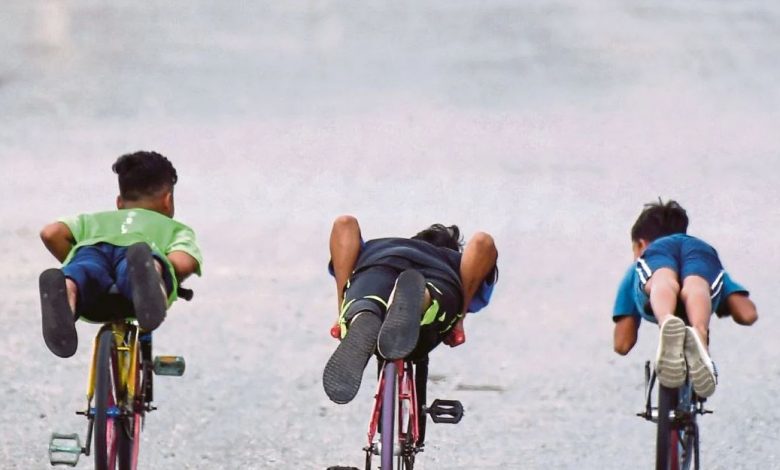

By Joachim Ng
Driving home along Tiger Lane, one of Ipoh’s most picturesque suburban roads, social commentator Mariam Mokhtar heard a sudden roar—but it wasn’t a tiger clawing at the car door, it was a mat rempit revving his m-cyle next to her. Mariam recounted in a video how a late night journey home after overtime work turned into a race to control her panic when some of the riders dared her to crash into them. She was fortunate nobody got hit.
But ill luck visited another lady, Sam Ke Ting. Like Mariam, she was driving home alone one night in Johor Bahru five years ago when there was a sudden encounter with mat lajak riding bicycles excessively modified for Superman-style road racing. She crashed into them, killing eight boys.
Each time you go out on the road, a turn of the wheel decides whether it’s just a routine move or a life-changing moment. In addition to the traditional hazards such as vehicles making sharp u-turns illegally or haphazardly parking, our roads are choked with delivery riders weaving left and right, suddenly cutting in front of you, or going against the traffic flow. We now have teenage bikers doing night joyride stunts at high speeds.
Why are boys drawn to the road in such bravado style? Another famous Ipohite, Alliance for Safe Community chairman Tan Sri Lee Lam Thye believes the answer is possibly a natural need for thrills, to expend pent-up energies, and even perhaps kill boredom.
Eight days ago, three teenage boys in Pasir Gudang, Johor were killed when they crashed and fell off their motorcyles. In Penang, teenagers on e-scooters used to ride down a gauntlet of busy crossroads heavy with cars, before the ban on micromobility vehicles.
Keep your eyes wide open and you can see a decaying social framework with so many of our teenagers falling into gangsterism, drug abuse, premature sexual relationships leading to pregnancies and unwanted babies, daredevil races on motorcycles and bicycles, and now speeding e-scooters.
Is there a solution? Yes, there is a way to keep them off the roads. Conscript them into a high-energy programme of activities that provides excitement and earns them heaps of community praise. With humanity facing the greatest threat to its survival from climate change, there is a dire need to galvanise the youth to save the future for themselves.
Prime Minister Datuk Seri Ismail Sabri Yaakob, in launching the Keluarga Malaysia Keluarga Sejahtera book recently, emphasised the importance of focusing on universal matters. Around the same time, in a Facebook posting on International Earth Day, the PM called on the whole of Keluarga Malaysia to play a spirited role in shouldering the responsibility of handing over a sustainable Malaysia to the coming generation.
This is a race to save humanity from accelerating climate change. Pass the baton to the teenagers now and not later. The Government must initiate a Climate Warrior movement as has been done in so many countries where teenagers have emerged from the classrooms to become agents of change in their societies.
India’s foremost climate warrior is Ridhima Pandey and she is only 12 years old, not yet a teen. Ridhima and other youthful climate warriors stand at the frontline of India’s vast tree-planting programme.
The worldwide youth movement against climate change began with Greta Thunberg who, four years ago at age 15, held up a sign outside the Parliament building in Sweden. Her sign read: School strike for climate. Her visually imaginative action spurred students in many parts of the world to push for a climate agenda, although not in Malaysia where there is a noticeable lack of public concern except among journalists and eco-NGOs.
As there can be no option but to stop climate deterioration, no option can be given to the mat rempit and mat lajak. Once caught doing illegal riding, they must be conscripted into the Climate Warrior movement and compelled to attend workshop lessons on climate change that will train them to become climate warriors. Upon graduation, put them on video to say a few words of encouragement for other teenagers.
Their first activity should be to go into the forest, led by Orang Asli guides who know more about living in harmony with nature than anyone else in Malaysia. It may be their first contact with tribal folks—who, elsewhere in the world, are now designated as First Nations people to acknowledge their lead role in nature conservation.
Although 55.3% of the country’s land mass is covered by forest, only 33.06% is gazetted as permanent forest reserves—leaving the rest vulnerable to destruction for economic gain. Let the Orang Asli awaken our kids to the catastrophic effects of logging, mining, plantation agriculture, and cattle-grazing land taking over forested areas.
Worldwide, the rate of deforestation is twice that of the rate of forest expansion. Only one tree is planted for every two trees destroyed. Malaysia’s current forest cover of 55.3% is down from 62% in the year 2000. Much logging approved by forestry agencies is disguised under the label of “management, conservation, protection and renewal”.
Logging is a big money-spinner earning billions of ringgit, but others pay for it when their homes get flooded and their cars, furniture, and appliances float away. Therefore, the first task of our teenage climate warriors is to become forest guardians assisting the Orang Asli. It is time that Orang Asli forest patrols be established and equipped with smartphones and satellite data so they can track environmental crimes and record them for police action.
A Climate Warrior movement should of course get the support of newspapers and social media so that our former mat rempit and mat lajak can receive deserved praise and become role models for other teenagers as well as adults. Climate warriors may even succeed in turning the electorate into a discerning ecological force by giving their votes only to politicians with green credentials.
Disclaimer: The views and opinions expressed in this article are those of the author and do not necessarily reflect the official policy or position of Ipoh Echo


